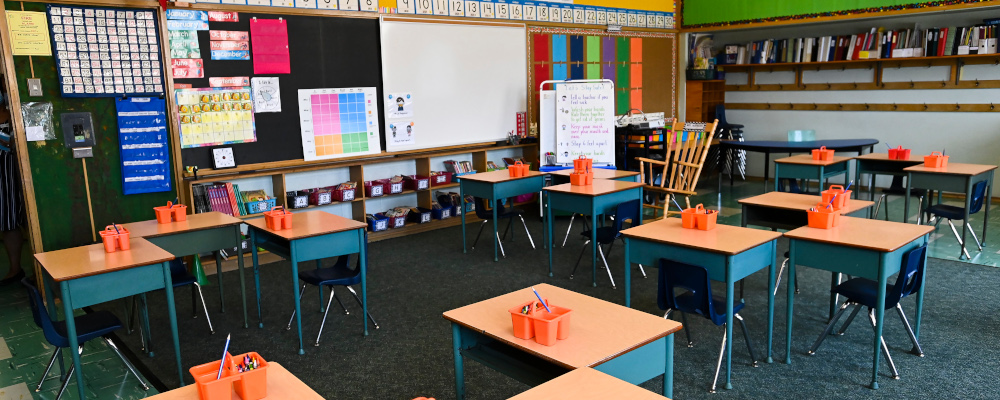The COVID-19 pandemic and its school shutdowns still haunt us. One in five children in the United Kingdom are persistently absent from school and are now described as “lost children.” The “staggering figure” has been identified as a national education crisis. In a rare show of unanimity, Education Secretary Jillian Keegan and Labour shadow secretary Bridget Phillipson both agree that it threatens the “life chances” of today’s generation.
Opening the London Sunday Times of January 7, 2024, a front-page news story grabbed U.K. readers’ attention. “One in four parents now think it’s fine for kids to skip school.” That startling statistic was based upon a YouGov poll conducted in December 2023 for a national think tank, the Centre for Social Justice (CSJ). It revealed, according to CSJ chief executive Andy Cook, there was “fundamental work to be done in rebuilding the contract between families and schools.”
Everywhere you look education systems are now coming to terms with the new reality. “Chronic absenteeism,” defined as missing 10 percent of the school year (i.e., 18 days or more), has been normalized in post-pandemic times. What student data we have presents a consistent pattern throughout North America and from province to province across Canada.
Student absenteeism rates have more than doubled. American school data, compiled by Stanford Education professor Thomas Dee, confirmed that the national average was 28 percent of students in 2020-21, double that of 2018-19. In Michigan, it rose to 39 percent during the pandemic. More recent data shows some improvement, but some cities still report absenteeism rates of 40 percent.
Finding reliable Canadian data requires considerable digging. In Ontario, the Hamilton Wentworth District School Board is fairly representative. Its regular student absenteeism rate rose from 3 to 4 percent in 2020 to between 8 and 14 percent in November 2022. That same month, Manitoba’s largest school district in Winnipeg reported that one in five students were absent, considerably more than the typical rate of 12 to 14 percent.
Provinces claim they do not track rates of chronic absenteeism, but raw attendance data is reported in most cases. In New Brunswick’s Anglophone School District West, the average absentee rate in early 2023 (February to April) hovered around 2.4 days per month for grades 9-12 and around 1.8 days for K-8 students. Projected over 181 school days, record numbers of students were in danger of being chronically absent from school.
Until recently, Canadian researchers and school districts have been essentially absent on the matter of tracking student absenteeism. That very point was made quite effectively in a rather provocative September 2021 Canadian Journal of Education article by University of Ottawa researcher Anton Birioukov.
Student absenteeism in Canada tends to run higher than in comparable Western countries. The number of Canadian students reporting skipping school on the Programme for International Student Assessment (PISA) grew by 5.4 percent between 2015 and 2018.OECD 2018, 2019 During the same period, the U.K. saw absenteeism drop by 5.6 percent, and the U.S. saw a tremendous 18.8 percent decline. Up until 2018, both countries reported lower absenteeism rates (U.K. 18.8 percent; U.S. 19.9 percent) than Canada (23.2 percent).
Birioukov’s review of university faculty profiles revealed that “no Canadian educational scholar investigates absenteeism as their primary area of research,” and he saw that as a critical policy issue. “The lack of empirical knowledge concerning student absenteeism,” he claimed, “is a contributing factor to the high levels of absenteeism evident in Canada.” His article was essentially a call to action for Canadian academics to provide the research to assist in addressing the problem.

What exactly is causing this uptick in absenteeism? While the requisite research into the matter hasn’t been conducted, it is not a stretch to think about this as an example of societal “long COVID,” wherein the long-term consequences of the pandemic are still being felt. Parents and students alike became even more acclimatized to children missing class due to the COVID-19 shutdowns and have yet to adjust back to pre-pandemic norms.
Regardless of the cause, current rates of student absenteeism threaten to undermine our relative success in instilling in the populace a commitment to ensuring school-age children are in regular attendance. Alarming rates of absenteeism suggest that parents, as well as children, do not prioritize school attendance to the degree they did a generation ago when compulsory school attendance was generally accepted across a wide cross-section of Canada’s socio-economic communities.
The persistence of high absentee rates demonstrates that it is not a passing phenomenon. Schooling is becoming optional and it will have dire consequences for the life prospects and employability of the pandemic generation. Winning students and their parents back is the strategic education issue of our time.
Recommended for You

‘It’s only bad news’: Canada’s condo market collapse

Stephen Staley: When the Blue Jays win, Toronto feels alive again

Jackie Pichette: Can testing times provide transformative opportunities for Canada’s post-secondary institutions?

The Alberta teachers’ strike is unlike any challenge Danielle Smith has faced before




